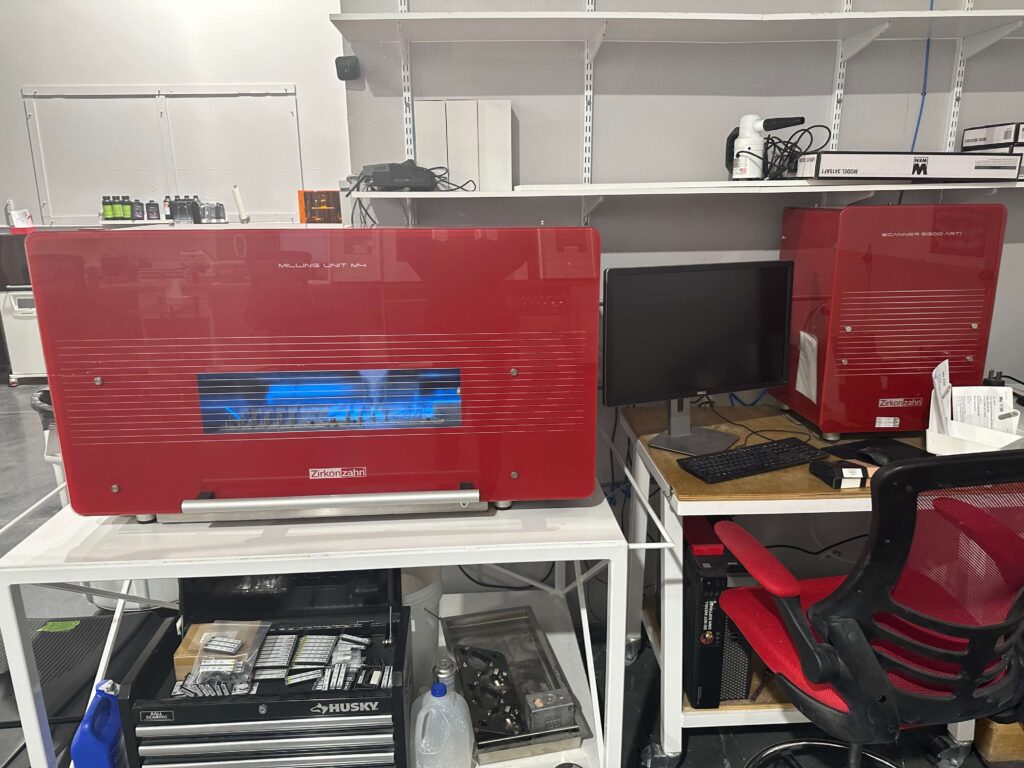Once upon a time, in a land where dental treatments were often complicated and painful, there was a magical perfect dental restorative material. This material was called “Enchant-a-tooth,” and it was said to have the ability to fix even the most challenging dental problems with ease and comfort.
One day, a young girl named Lily came to the kingdom with a severe toothache. She had tried many treatments, but nothing seemed to work. The kingdom’s top dentists were stumped and didn’t know how to help her. Not a DMD or DDS in the land could diagnose the problem or offer a solution. That was until one day, a wise old dentist named V.G. White approached Lily and offered her a solution. He told her about Enchant-a-tooth, the magical restorative material that could heal her tooth and bring back her smile.
Lily was skeptical at first, but with nowhere else to turn, she agreed to give it a try. V.G. White prepared the material and, with a wave of his wand, the material began to glow and flow into Lily’s tooth. As soon as the material was in place, Lily’s toothache disappeared, and her tooth was restored to its former strength and beauty.
From that day on, the kingdom’s dentists no longer needed to even diagnose dental problems. Enchant-a-tooth was the answer to every dental issue, and patients no longer had to suffer through drill-n-fill treatments. V.G. White became famous for his discovery, and people traveled from all over the land to experience the magic of Enchant-a-tooth for themselves.
And so, Lily’s smile was restored, and she lived happily ever after. The kingdom’s dentists continued to use Enchant-a-tooth for every patient, knowing that with this magical material, they could deliver the best dental care possible and bring happiness to all those in need.
If only…while there is still no perfect material for dental restorations, we’ve seen a massive improvement in esthetic materials available for restoring our patients’ smiles. Zirconia materials have enjoyed a massive market takeover of the dental lab industry due to a long list of favorable properties. Additionally, they have improved significantly in esthetics, wear characteristics and strength as formulations have been perfected by manufacturers over the last couple decades. What makes zirconia better than the time tested porcelain fused to metal (PFM) restoration?
- Compatibility: Zirconia is a biocompatible material that is well-tolerated by the gums and other oral tissues. In contrast, PFM can sometimes cause irritation and inflammation of the gums, leading to long-term health problems.
- Durability: Zirconia is a very strong and durable material that can withstand the demands of daily use. In contrast, PFM restorations can sometimes crack or chip, exposing the metal beneath and increasing the risk of corrosion and allergic reactions.
- Aesthetics: Zirconia is a highly aesthetic material that can be customized to match the color and texture of natural teeth. In contrast, PFM restorations can sometimes have a noticeable metal margin that is visible when the patient smiles, affecting their appearance.
- Minimal preparation: Zirconia restorations require minimal tooth preparation, preserving more of the natural tooth structure and reducing the risk of postoperative sensitivity.
- Long-lasting: Zirconia is a long-lasting material that can withstand the test of time. In contrast, PFM restorations can sometimes require replacement due to corrosion or wear and tear.
In summary, zirconia is considered a more biocompatible restoration than PFM due to its superior tissue compatibility, durability, aesthetics, minimal preparation, and long-lasting nature. These factors make zirconia an attractive choice for dental professionals and patients alike.
So, is all zirconia the same? Hardly. There are lots of different qualities and grades that affect the final product delivered to your patient. To understand the outcome, it’s important to know how zirconia pucks are made. The raw material preparation is the first step in the process of making dental zirconia. The starting material is zirconium oxide powder, which is a fine, white powder that is obtained through the purification of zirconium minerals.
The zirconium oxide powder is then processed to remove any impurities, such as carbon and nitrogen, which can affect the material’s final properties. This is done through a process called purification, which involves heating the powder to high temperatures in a controlled atmosphere.
After purification, the zirconium oxide powder is molded into small pellets or discs, which will later be used in the sintering process. The size and shape of these pellets or discs are carefully controlled to ensure that they are uniform and of the correct size for the subsequent steps in the manufacturing process.
In addition to molding, the zirconium oxide powder can also be treated with special additives, such as yttria, which can improve its mechanical properties, such as toughness and strength. By adding more yttria the puck becomes stronger, but more opaque. Less yttria and more cubic phase zirconia means a more translucent and esthetic product. This is a careful balancing act between beauty and strength. These additives are carefully selected and controlled to ensure that the final product meets the required specifications for its specific use. Pucks indicated for long span bridges will have more yttria than aesthetic zirconia designed for single tooth anterior restorations.
Isostatic pressing is the next step to turn the powder into dental zirconia pucks. This process is similar to traditional pressing, but it uses a unique method of applying pressure to the zirconia powder, resulting in a more uniform and consistent product.
In isostatic pressing, the zirconia powder is placed in a flexible container and subjected to a uniform pressure from all directions. This pressure is generated by a pressurized fluid, such as water or gas, which is applied to the container. As a result, the zirconia powder is compacted into a dense puck, which is then subjected to sintering to produce a solid block of dental zirconia.
The main advantage of isostatic pressing is that it provides a more uniform and consistent product compared to traditional pressing methods. This is because the pressure applied during isostatic pressing is evenly distributed from all directions, resulting in a more uniform density and structure in the final product.
Isostatic pressing is also more efficient than traditional pressing methods, as it requires less time and energy to produce a dense, uniform puck. This puck is sintered, or heated after pressing to create a soft-state puck ready for milling at the dental lab.
Hopefully, reviewing the manufacturing process helps you understand the importance of starting with high quality pucks. We only use pucks manufactured in the USA under strict quality control. We believe starting with a quality product is imperative for achieving a quality final product that will last. If you want specifics on why and how we use the materials we do, feel free to drop by and visit us here in Beaverton, Oregon where we make everything in house. Or, give us a call at 503-616-9301, or email us elementdentallab@gmail.com. So, until Enchant-a-tooth hits the market, high quality zirconia is a favorite for us here at Element Dental Lab.

